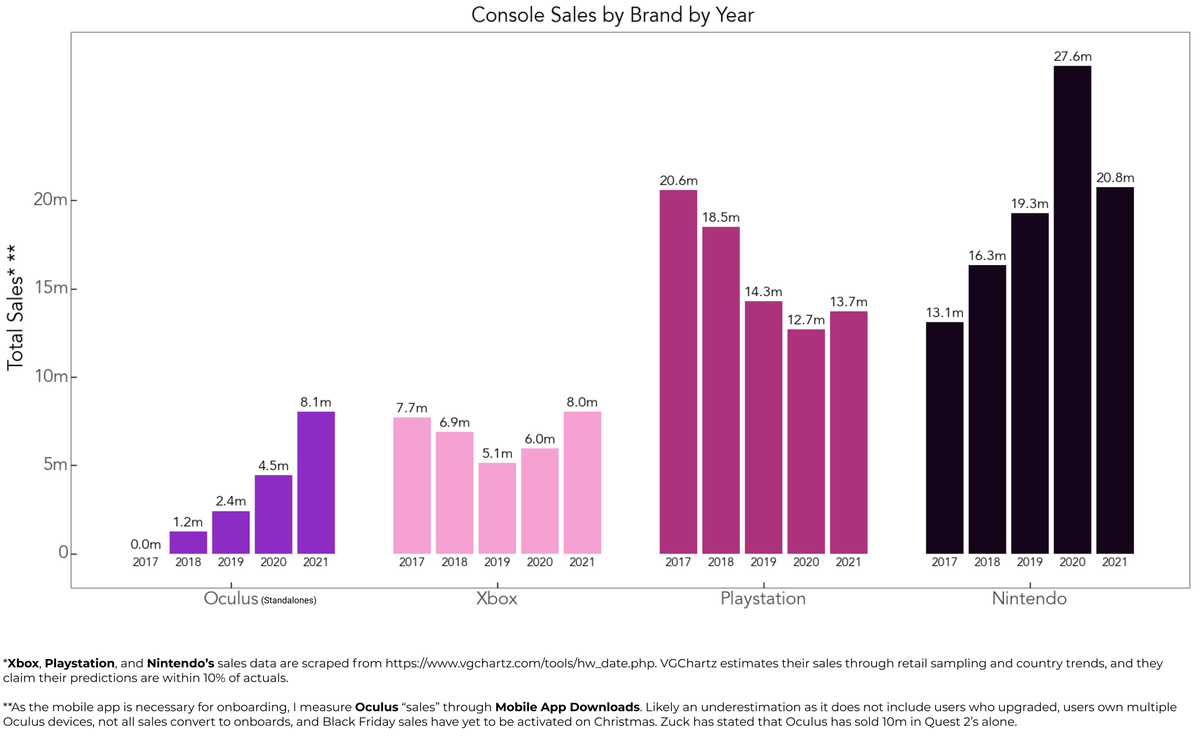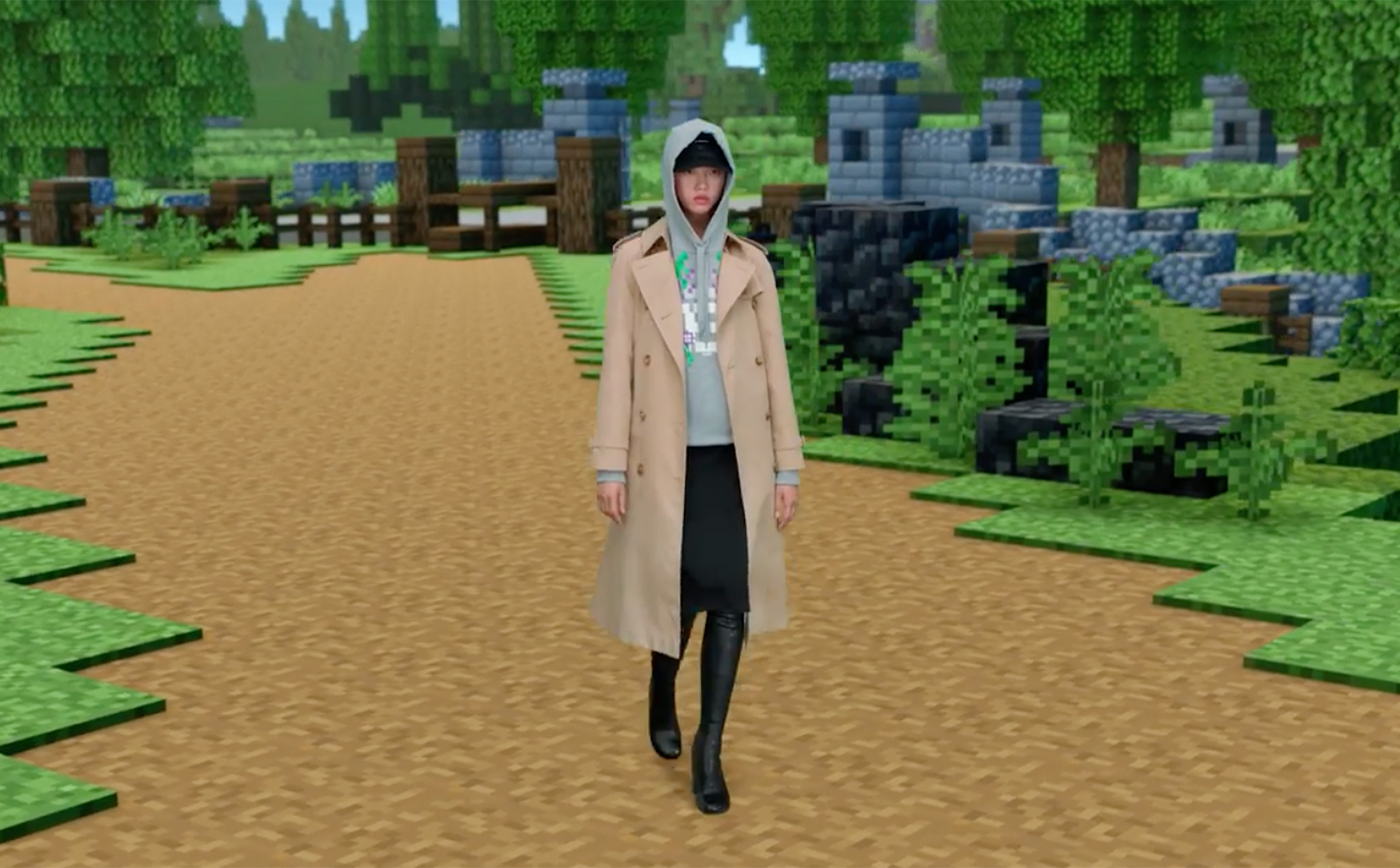Crossing Multiple Chasms with Web3 Technologies
Rather than dive into mostly examples this week, we’ll start our tour with a 30,000 foot view of what’s going on in the Web3 world as a whole, and some ways to observe it as a larger trend.
One of the challenges of observing trends in Web3, and its Metaverse-cousin, is that both are somewhat amorphous concepts (the Metaverse is literally an idea ripped out of a science fiction novel and turned into a hopeful business model) that are composed of multiple different technologies like blockchain, NFTs, VR, virtual worlds, cloud streaming, etc. that have their own, independent adoption curves.

Way back in 1991, about the time Tim Berners-Lee was creating the first website, Geoffrey Moore wrote Crossing the Chasm, a book that outlined the challenge that new products (and technologies on the whole) face. In the early days, innovators, who just love to explore anything new and interesting, embrace technologies even if they’re a bit clunky or their purpose isn’t always entirely day to day practical. As prototype customers, innovators often help technology creators shape their initial gizmos into more practical, refined and consumable products. At this point, Early Adopters enter the chat, using products which are sometimes in beta releases and not-quite ready for prime time.
Here’s where it’s do or die time. Either those early adopters embrace the innovation, seeing the new value, buying product, writing great articles, reviews and telling friends in a way that translates into something that resonates with the bigger crowd – the Early Majority, or it just flops. Maybe not the end of the line, but if it still has a chance it’s only as a niche product.
Let’s look at VR for example. The Meta Quest 2, in our most current polling research, has about 18% household ownership amongst the general US population and 25% ownership amongst 18-24 year olds. In 2021, Jack Soslow tweeted a yearly sales estimate that had Oculus 2 beating Xbox in device sales. Mainstream content from Star Wars, Foo Fighters, and new breakout hits like $100M+ in sales Beat Saber, which is reminiscent of games like Guitar Hero with popular musical artists, gives the hardware an app store that feels like it can endure.

Has it jumped the chasm? Maybe we’ll say it’s almost there.
Takeaway for Marketers: The Chasm is a profoundly useful idea in mapping out go-to-market strategies, particularly for new products. Each audience has its own needs and nuances and this framework can be helpful for planning long-term GTM strategies with products that include innovations.
Moving to a potentially more useful infographic, let’s take a look at Gartner’s Hype Cycle, and one of the most insightful patterns it tells us about, which is the Trough of Disillusionment.

Gartner’s Hype Cycle for Emerging Technology, 2022
Their model tracks technologies as they move through a different look at the adoption curve, which is almost always one in which a large amount of hype is generated as an idea becomes mainstream, with people imagining all the new ways the technology can be deployed. Following the excitement, there’s gap between the hype-created imagined version of the technology’s future state, and what it actually looks like at the moment. The market dives into the Trough of Disillusionment. We see that somewhat now with the crypto crash reducing values of NFTs alongside a downswing in NFT purchase volume, as well articles frequently pointing out that technically, the Metaverse doesn’t exist (yet) and heavy pressure on Meta around their level of investment into long-term emerging technologies vs playing the game to maximize quarterly earnings.

Gartner’s Hype Cycle for Emerging Technology, 2011
Looking back at the Hype Cycle from a decade ago, it’s interesting to note that Virtual Worlds were just rising out of the Trough of Disillusionment and into the Slope of Enlightenment. In that era, Roblox had been around for 5 years, Minecraft was about to launch to become one of the most popular games of all time, and SCS (as Fuel) was building a Happy Meal connected virtual world for kids with McDonald’s Europe that would run for over 5 years, regularly sitting in ComScore’s top 10 kids site for Europe.
A tale of two especially notable worlds that launched around the same time, Second Life and World of Warcraft, provides an interesting lesson for today’s Metaverse-builders. While WoW once had 100 million players and generated over 9 billion in revenue by 2017, Second Life tended to hover around 1 million players forever, despite being the spot where brands focussed their efforts. It’s easier to make a virtual office or store in Second Life than World of Warcraft, after all. The lesson is that gamification is critical to giving users purpose in these social worlds, and a touch of escapism is key for these types of experiences.
Popular games of today that are viewed as “Metaverse Precursors” are essentially just the Virtual Worlds of yesteryear renamed.
Takeaway for Marketers: New technologies always have hype cycles, and there will be bouts of disappointment, so plan early executions as experiments and don’t worry too much if they fail. Innovation is a long-game.
Burberry x Minecraft Get Fancy with Fashion Collab
In perhaps the most interesting fashion x metaverse collab since North Face x Gucci partnered up with Pokemon GO, Burberry and Minecraft have teamed up to provide a cavalcade of integrations that blend fashion and gaming.
From the brand: “Discover the Burberry x Minecraft collaboration – an in-game adventure, capsule collection and real-world experiences, each filled with creativity, exploration and self-expression. Inspired by the fast-paced in-game adventure into the unknown, the Burberry x Minecraft capsule collection fuses in-game motifs with unmistakable Burberry icons.”

A physical Burberry collection has been designed, and is for sale, inspired by four specially created environments in the game that can be explored. Players can also try on the Burberry designs in-game. The activation includes the nice touch of lightly explorable Minecraft environments directly on the promotional page.

Takeaway for Marketers: Be bold about partnering with properties that target your up and coming customers. The how might not be obvious at first, but seeing Burberry’s iconic pattern within the game and runway models walking through virtual worlds pulls it all together for something totally unexpected, interesting, and relevant to new customer bases who may have had little interest in the brand otherwise.
